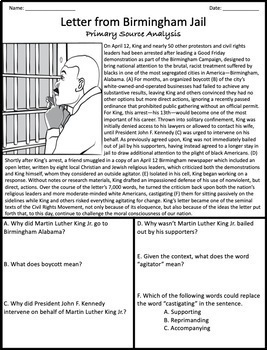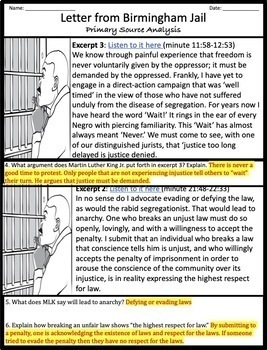MLK Jr.'s Letter from a Birmingham Jail: Primary Source Analysis
- Zip
- Easel Activity
What educators are saying
Description
*** Now includes audio links and time stamps!
The Letter from Birmingham Jail is an open letter written on April 16, 1963, by Martin Luther King Jr. The letter defends the strategy of nonviolent resistance to racism. It says that people have a moral responsibility to break unjust laws and to take direct action rather than waiting potentially forever for justice to come through the courts. Responding to being referred to as an "outsider," King writes, "Injustice anywhere is a threat to justice everywhere". This product takes a look at 6 key excerpts from the letter. The excerpts are accompanied by scaffolded questions. This product comes with a complete teacher's key. Ready to use - no prep!
Clipart Credit for thumbnail: Massare Clips and Design
You might also be interested in this similar product:
The Gettysburg Address: Primary Source Analysis






